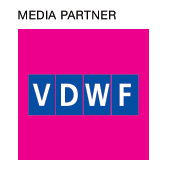Digital printing - enabling the ‘connected factory’ of the future
11.05.2020
The world of packaging is facing many changes. The drivers behind these changes include new routes to market such as e-commerce, new supply chain models like multichannel supply, but also new regulatory and sustainability requirements and new customer demands for more customised and personalised products. New technologies and materials are required for — and indeed enable — these changes to occur. Digital printing is one such breakthrough within the packaging world and one in which Nestlé has invested in recent years, observing developments and driving them towards the specific needs of food packaging for their businesses.
What a privilege to see how the centuries-old ‘analogue’ printing industry is reinventing itself ‘digitally’ in such a short time: it has only taken about twenty years for digital printing to enter every sector of printing per se. It is fast getting real even in the challenging area of food packaging, where volumes together with compliance aspects were once considered unsuitable for ‘digital’.
 At Nestlé we are confident that digital printing is a long-term trend that has come to stay, not just a fad that will fade, such that the digitalisation of printing is itself a major step in reshaping the whole converting industry.
At Nestlé we are confident that digital printing is a long-term trend that has come to stay, not just a fad that will fade, such that the digitalisation of printing is itself a major step in reshaping the whole converting industry.
As the last drupa exhibitions have shown, nowadays it is all about digitalisation. The main print-press vendors are well advanced on their digital roadmaps and newer players are entering the scene on the same road. This said, while the digital printing industry is very lively, it is still quite fragmented and so we expect a phase of business and market consolidation in the coming years, driven by the need to adapt to new technology needs or usages. We are also witnessing a strong surge in print-in-production, with history seemingly repeating itself as ‘printing’ comes back to ‘production’. This has all to do with late-stage customisation: customisation that is itself achieved at a late stage in the process
As our journey advances, as technologies mature and prices fall, we will always find new opportunities to leverage the benefits of digital printing, from modest to bold as well as small to large. But we will also be confronted by new requirements and barriers to overcome. Currently we foresee two specific aspects that are becoming ever more critical for the efficient adoption of digital printing:
Sustainability
The first aspect is all to do with supporting the need for more environmentally sustainable production – and this includes print production. In our case, we have made a commitment to use only recyclable or reusable packaging by 2025. To help us meet our commitment, we established the Nestlé Institute of Packaging Sciences, which together with suppliers and other external partners is exploring alternative packaging materials.
We can already anticipate that these materials, such as paper-based laminates, have lighter barrier-properties compared with materials in use today. This presents a challenge to the related printing processes and will constrain their usage. It’s true, of course, that digital printing inks have made huge progress in food-compliance and are still improving significantly. However, on new packaging materials with lighter barrier-properties, some printing systems (the combination of a printing process, an ink and its finishing process) will need to be adapted to meet our strict requirements for food packaging. Additional requirements will also affect targeting, for example, reusability, recyclability or compostability. Are today’s ink formulations, developments and finishing processes ready for this transition? There are only a few years left to crack all this; sustainability is becoming a primary decision-making criterion and the printing industry must prepare for it.
Data-management
The second aspect underlying the promise of digital printing has to do with variability in the printout (output) as well as flexibility in the printing (process). Print jobs are more and more related with data management as each output is potentially unique with its own variable data that is managed flexibly within an agile printing process. And so, I return to the topic of late stage customisation, which appears in so many presentations, media articles and literature on digital printing. What does it mean exactly? Well, it means having the ability to customise the output at the latest stage, which itself means moving printed packaging from a conventional rigid supply-chain to a networked supply-chain where different players can print different static and variable layers of an artwork in one or several locations. It means moving away from a monolithic approach, where the full printing and converting processes are entirely outsourced, to where there will be a variety of supply-chain options to cover the high variety of products, business models and routes to market (ranging from fully outsourced supply to fully internalised printing and converting, with mixed approaches in-between). This is our definition of variability and flexibility, derived from data-driven print production and late stage customisation.
 In order to achieve all this, the dots need to be connected, meaning the print-job data as well as the printing and converting process must connect seamlessly into an integrated end-to-end supply-chain workflow. This integration and connectivity happen in two dimensions, namely horizontally and vertically. Horizontal integration involves the progressive digitalisation of the complete converting machinery and processes, streamlining the repro whilst still ensuring colour matching and consistency. This digitalisation has already occurred for the artwork and prepress, is happening for the printing step, and will progressively include the decorating, cutting and folding-gluing steps as well as any more particular converting steps. Vertical integration relates to the print- and converting-data. It ensures that the right output is achieved from the right data in a make-to-order or print-to-order model. Both static as well as variable artwork-data must be aggregated dynamically together with production-specific data coming from a production order, making in the end every pack literally unique if so required.
In order to achieve all this, the dots need to be connected, meaning the print-job data as well as the printing and converting process must connect seamlessly into an integrated end-to-end supply-chain workflow. This integration and connectivity happen in two dimensions, namely horizontally and vertically. Horizontal integration involves the progressive digitalisation of the complete converting machinery and processes, streamlining the repro whilst still ensuring colour matching and consistency. This digitalisation has already occurred for the artwork and prepress, is happening for the printing step, and will progressively include the decorating, cutting and folding-gluing steps as well as any more particular converting steps. Vertical integration relates to the print- and converting-data. It ensures that the right output is achieved from the right data in a make-to-order or print-to-order model. Both static as well as variable artwork-data must be aggregated dynamically together with production-specific data coming from a production order, making in the end every pack literally unique if so required.
At first glance, this degree of integration and connectivity to achieve a batch-of-one might sound futuristic and it is definitely ambitious, but the reality is that all the necessary technology building-blocks already exist today. Digital Front Ends rip dynamic artwork for the printer. Manufacturing Execution Systems dispatch production-order information to the various assets of a production line. Dedicated servers ensure additional functionality, such as serialisation or aggregation. For each and every type of data, a dedicated and well optimised channel exists. In addition, connectivity standards are maturing and being adopted to ensure both horizontal and vertical communication between all the modules of a production environment. All these channels, which are today mainly independent, can start to be interconnected to combine, on-demand as and when needed, the relative data, rip it accordingly, and finally print it to produce every unique packaging item.
Data is the fuel of today’s economies, as shown so quickly and efficiently by the famous “GAFA” companies. The ability to create, collect, handle, combine, extract, analyse, process and convey data is what will drive the most efficient businesses. Printing is no longer about accurate colour-matching and process-efficiency. It is rather about conveying to buyers and consumers digital information that has been applied physically on the pack. Some call it the blended reality, it is nonetheless a paradigm-shift enabled by combining digital printing with connectivity. Such a shift is a prerequisite for achieving personalisation and customisation, the “holy grail” of the digital transformation in Consumer Package Goods (CPG) and it envisions the connected production-floors and factories of the future.




































